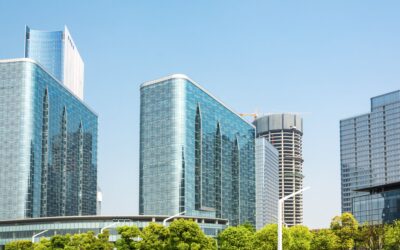Investing in commercial real estate can be financially rewarding because this asset class generates recurring income while holding its underlying value over time.
Most properties are held for five to ten years, so there is enough time for appreciation and income growth.
But of course, long-term performance depends on how well the asset can sustain its appeal — that is, whether it can stay relevant to changing market and tenant demands.
If you don’t plan for obsolescence, you may end up holding a property that looks good on paper but ultimately doesn’t generate the income or exit value you expected.
What is obsolescence in commercial real estate?
In real estate, obsolescence refers to any condition or feature that has become outdated or no longer meets current market expectations.
It can be either curable or incurable, depending on whether the issue can be cost-effectively remedied or not.
Obsolescence affects both your property’s risk profile and the amount of capital required to maintain or update it.
In commercial real estate, identifying obsolescence early helps you make informed decisions about whether to renovate or reposition, or even divest an asset.
The three main types of obsolescence that affect commercial properties are:
- Functional obsolescence
- Economic obsolescence
- Physical obsolescence
What is physical obsolescence?
Physical obsolescence is when your property loses value because of neglect or aging infrastructure.
For example, ignoring a persistent roof leak means water can seep through the walls and cause mold damage down the road.
Repairing that level of structural and environmental damage could be so expensive that it becomes more practical to demolish or completely rebuild the property.
Common signs of physical obsolescence
- Aging or inefficient HVAC systems and plumbing
- Roof leaks or visible structural damage
- Inadequate insulation or outdated materials
- Frequent equipment breakdowns or escalating maintenance costs
- Poor energy performance compared to modern buildings
- Non-compliance with updated building codes and fire safety regulations
- Outdated or a lack of accessibility features
It may no longer be financially viable for you to upgrade the property if the cost to meet safety and energy requirements outweighs the potential rent growth or resale value, unless you make a significant investment.
What is functional obsolescence?
Functional obsolescence happens when a property loses value because certain design elements or layouts no longer meet current market expectations.
Shifting tenant preferences and buildings with outdated architecture are perfect examples of this. You can also find functional obsolescence in properties with technological limitations.
For example, do you remember the office buildings from back in the 1970s and 1980s?
Those that were never updated now struggle to attract tenants who expect open-plan layouts and energy-efficient features.
The positive side is that you can often ‘cure’ or correct many aspects of functional obsolescence.
Are there outdated finishes? You can easily modernize that.
When you buy an older property at a discount and invest in upgrades to meet current standards, you can increase its market value and improve tenant appeal.
That said, some cases of functional obsolescence are ‘incurable.’
For instance, an obsolete building design that no longer fits modern business needs may require such extensive changes that renovation becomes too expensive for you.
Signs of functional obsolescence
- Inefficient use of space (such as oversized lobbies that waste rentable square footage)
- Lack of amenities, including insufficient parking and no loading bays.
- Weak digital infrastructure, inadequate technology for data-heavy operations
- Buildings that can’t easily be reconfigured for new tenants or mixed-use conversion
In an age where electric vehicles are becoming more common, not having EV charging stations can also make your building functionally obsolete.
What is economic obsolescence?
Economic obsolescence occurs when the property’s value declines due to external factors beyond your control.
It can be due to infrastructure changes or nearby construction, as well as changes in surrounding land use that can negatively affect accessibility or desirability.
Imagine purchasing a shopping center at a signalized intersection with convenient access, and then the city removes the traffic signal or turn lane a few years later.
This will reduce visibility and make your property less accessible, so it becomes less attractive to shoppers and tenants.
While you typically can’t prevent economic obsolescence, you can take steps to anticipate and mitigate its effects.
Take the time to review local zoning and transportation plans to identify upcoming changes before purchasing a property.
You can also engage local officials or participate in planning discussions early to protect your investment, especially if a future development poses a potential threat.
Signs of economic obsolescence
- High or persistent vacancy rates compared to similar properties in the market
- Falling lease renewals or declining rental income
- Neighborhood deterioration or demographic shifts reducing tenant demand
- Regulatory changes such as rezoning, new environmental standards, or infrastructure rerouting
Causes of obsolescence in commercial real estate
Internal causes
The most common internal cause is neglect.
Commercial properties require ongoing maintenance and periodic upgrades to remain functional and competitive.
For instance, you should have your HVAC systems serviced regularly, with air filters replaced on schedule.
When neglected, these systems wear out prematurely and reduce the property’s usable life and performance.
A malfunctioning HVAC system can make your entire building less desirable, ultimately increasing the risk of obsolescence.
External causes
External factors originate outside your property, making them generally harder to control.
Examples include shifts in market preferences and zoning regulation changes, as well as new construction nearby or altered traffic patterns that reduce accessibility.
While some of these changes can occur unexpectedly, many happen gradually.
This is why you must stay alert to evolving market conditions and economic trends, and keep pace with urban development plans.
When you’re aware of these factors, you can anticipate potential issues before they negatively affect your property’s value.
Curable vs. incurable obsolescence
Curable obsolescence can be fixed through improvements or repairs that offer a reasonable return.
For example, you can update old finishes or replace outdated systems to restore your property’s appeal and functionality.
Incurable obsolescence, on the other hand, cannot be easily corrected.
A good example is a major traffic reconfiguration that reduces customer access to your retail center.
While you might advocate for changes, the ultimate decision lies with local authorities, leaving the issue largely beyond your control.
Knowing which issues fall into each category can help you prioritize renovation spending and avoid overcommitting your resources to problems that can’t be solved.
Why is understanding real estate obsolescence is important?
Recognizing and assessing obsolescence is a key part of your due diligence process before you invest in commercial real estate.
It influences both risk and cost — two major factors in investment decisions.
Risk profile
From a risk standpoint, identifying potential obsolescence helps you gauge how likely a property is to lose value over time.
Older buildings typically come with higher risks of obsolescence, which is why they’re often priced lower than newer ones.
When you understand this relationship, it’s easier to balance opportunity with potential downside.
Cost requirements
From a cost perspective, understanding obsolescence will give you insight into a building’s future capital needs.
You can estimate how much it will take to address or ‘cure’ certain deficiencies and factor those costs into your financial models.
For example, if a property shows early signs of functional obsolescence, such as outdated layouts or inefficient systems, you can project renovation expenses and adjust your cash flow assumptions.
This provides a clearer picture of expected returns, allowing you to avoid unexpected financial strain later on.
How does obsolescence impact your CRE portfolio?
Regardless of property type, the effect of obsolescence is the same — it makes your property’s value decline.
Take functional obsolescence as an example. While the drop in value may not happen immediately, you may start losing tenants to newer, better-equipped spaces.
And as occupancy decreases, rental income and cash flow also fall, which in turn lowers your property’s valuation.
This gradual decline can continue over several years and erode long-term returns if you don’t address the issue.
That’s why it’s wise to continuously monitor asset performance and asset trends.
When you can spot the early signs of obsolescence, you can take corrective action as soon as possible, whether through renovations or positioning, or even refinancing.
Need help with funding?
At Private Capital Investors, we specialize in helping commercial real estate investors like you access the funding necessary to acquire and refinance, as well as reposition properties.
With more than 25 years of experience and over 8.5 billion USD in funded transactions, we are a nationally recognized direct lender trusted by investors across the CRE industry.
We provide capital solutions through our extensive network of partners — supporting both U.S. and international investors who want to expand their portfolios.
We’re confident that we can structure financing that aligns with your goals, whether you’re developing or purchasing, or even upgrading a property.
When you’re ready to get started, give us a call at 972-865-6206 or email info@privatecapitalinvestors.com.
You can also apply for a loan directly on our website to start your next commercial real estate project with confidence.





